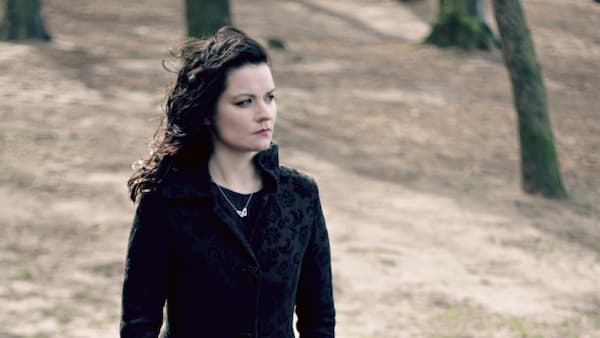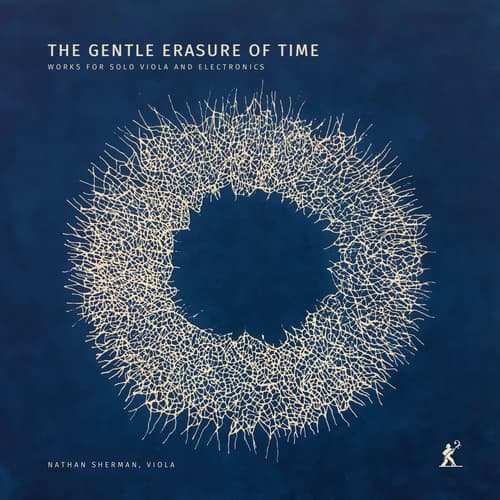In London, April is the month of cherry blossoms: clouds of pastel blooms flourish on seemingly every street corner. As the fullness of spring creeps into these gradually brighter days, I find myself craving new music and new sound worlds. If this resonates with you, look no further than the music of Linda Buckley.

Linda Buckley
A great point of entry to Buckley’s work is her piece for violist Nathan Sherman’s The Gentle Erasure of Time, a collection of works for solo viola and electronics. Buckley’s contribution, The Thin Veil, treats the electronic component with refreshing subtlety. Soft, grainy white noise, near-inaudible shimmers, and low drones create a gently expanding ecosystem for the probing, insistent melodies of the live viola. These melodies – mournful, irregular, and at times rhythmically agitated – are crafted with great intentionality of pitch. Each note introduced chisels for itself a distinct timbre and personality within the texture, with the aid of repetition and Buckley’s thoughtful spacing. The work’s title is a reference to the Gaelic festival of Samhain, which marks the end of harvest season and the time when the boundary, or “veil,” between the physical and spiritual worlds is said to be particularly thin. With this in mind, the viola’s continual two-note oscillations might signify the shivery overlap of two worlds drawing ever closer together.
Linda Buckley: The Thin Veil (Nathan Sherman, viola; Linda Buckley, electronics)

Nathan Sherman
Buckley’s Irish heritage is a recurring theme in her work, and she often draws inspiration from the sounds and concepts of her background. She grew up on a cliffside farm in County Cork, directly “facing the power of the Atlantic Ocean,” as Buckley puts it. In a chaotic, musically gifted household, Buckley’s earliest sonic memories included distant lighthouse foghorns, the hypnotic machinations of the family milking machines, and her mother’s atonal lullabies. Buckley herself grew up singing, and in her hauntingly lovely 2020 release, From Ocean’s Floor – named one of The Guardian’s ten best folk albums of that year – Buckley seamlessly interweaves a traditional, ornamented style of Irish singing, sean nós, with violin, electronics, and Canna Sonora (an esoteric instrument made from tuned aluminium tubes). Prone to combining the medieval and ancient with contemporary electronics, it is a testament to Buckley’s compositional prowess and the skill of performers Iarla O’Lionaird (voice) and Darragh Morgan (violin) that in From Ocean’s Floor, the emotional depth of the seventh-century Gaelic poetry is powerfully communicated in a nonetheless completely 21st-century way.
Indeed, Buckley exemplifies a compositional open-mindedness that feels distinctly 21st-century in spirit. Academically trained, with a PhD in Composition from Trinity College Dublin, Buckley has praised the blurring of genre boundaries she feels she has witnessed in recent years and emphasised that for her, “it’s all about embracing the total experience of music making.” Her practical resume consists of activities and sound worlds as varied as Irish traditional singing, Indian vocal percussion, Javanese Gamelan, medieval organum, as well as electronica and post-rock. Discussing another piece for viola and electronics, do you remember the planets?, Buckley notes that each violist draws out something different in performance: “some players really go for… almost raw electronica-like energy, [while] others connect more to its medieval influence, and purity.” Indeed, on the topic of electronica, Buckley’s lovely track Error Messages is a work of outright ambient electronica, with unmistakable influences from the likes of Aphex Twin and Boards of Canada. In an interview with musicologist Bob Gilmore, Buckley was asked if she ever felt overwhelmed by the diversity of her musical experiences and whether that diversity made it harder to find her compositional voice. The answer was a resounding no, reassuring to all composers and musicians with eclectic taste.

“I assimilated [the experiences] and I filtered them through my own experience and I think they came out in my music, in various subconscious ways… the range of different music was hugely important for me and I never really felt that I had to choose between them. I always found very strong connections between them. I never felt I needed to build boundaries; they all felt natural.”
In music scholarship, one is often aware of the potentially reductive nature of analysing a composer’s musical decisions by way of their personality traits. Nonetheless, some composers have themselves avowed that the qualities of their music can all in some sense be traced back to one or two core personality traits. Buckley is one such composer, noting that her work often contains swathes of stasis and drone punctuated with pockets of frenzy or hyperactivity. She notes that she is “drawn to extremes… very open, very emotive, excited.” This results in pushing herself to the limits, then needing “stillness and calm,” a pattern she is “drawn to… in music also.” Bob Gilmore notes that many of her pieces explore “exchanges of energy, two different things coming together and generating a new condition out of their collision.” Indeed, unafraid of combining musical effects separated by hundreds of years of human history, Buckley is unafraid of extremes or collision – and the electrifying emotionality that results.
For more of the best in classical music, sign up for our E-Newsletter
